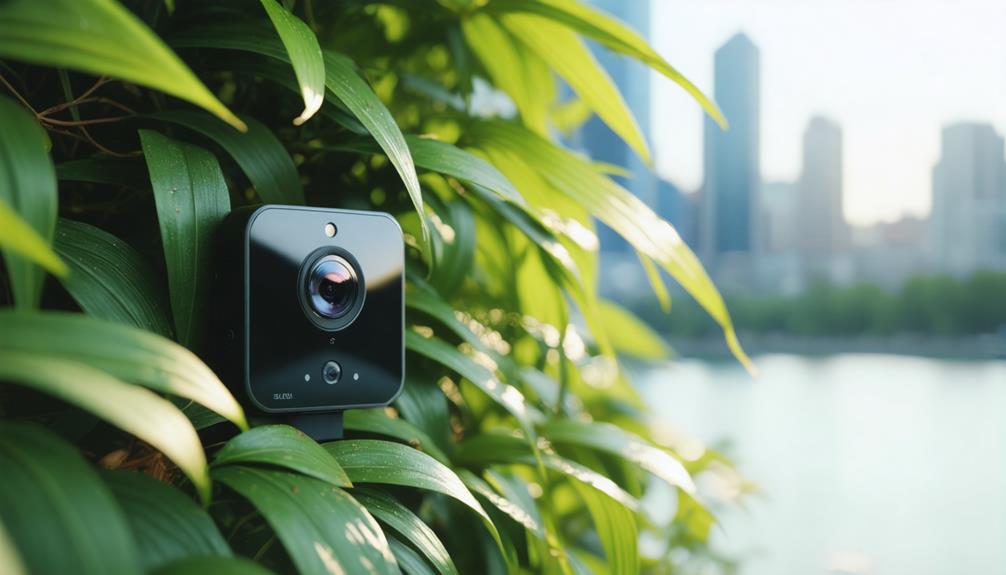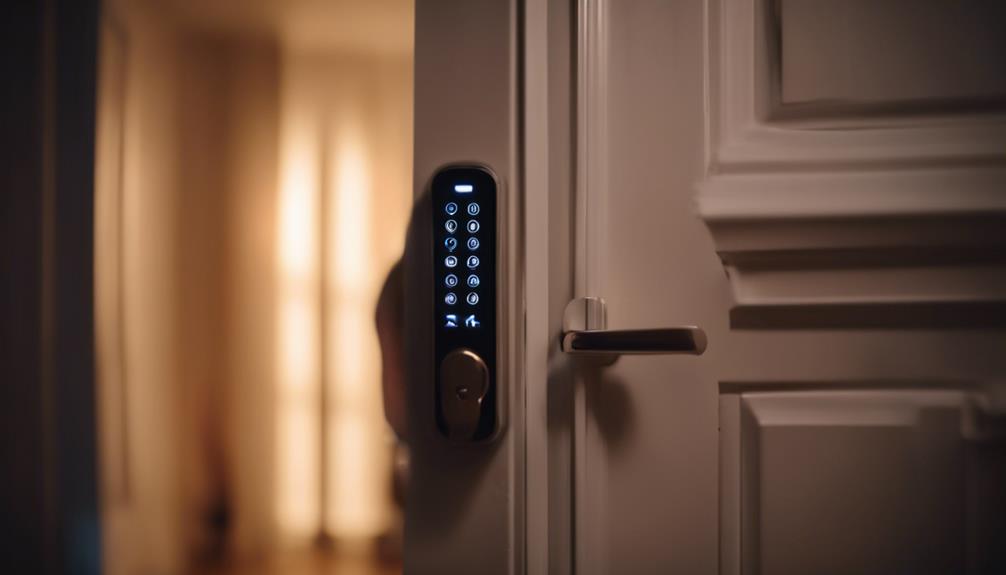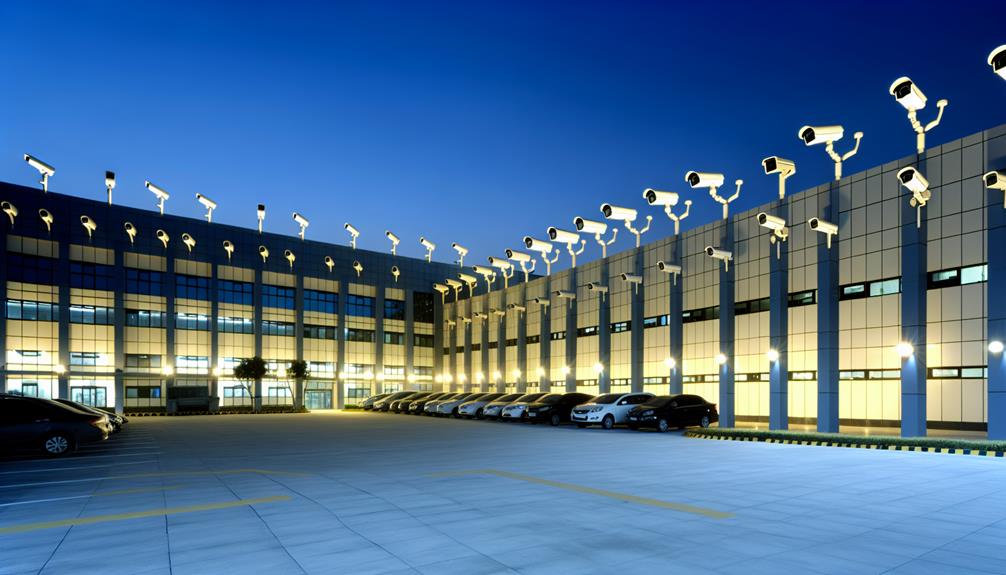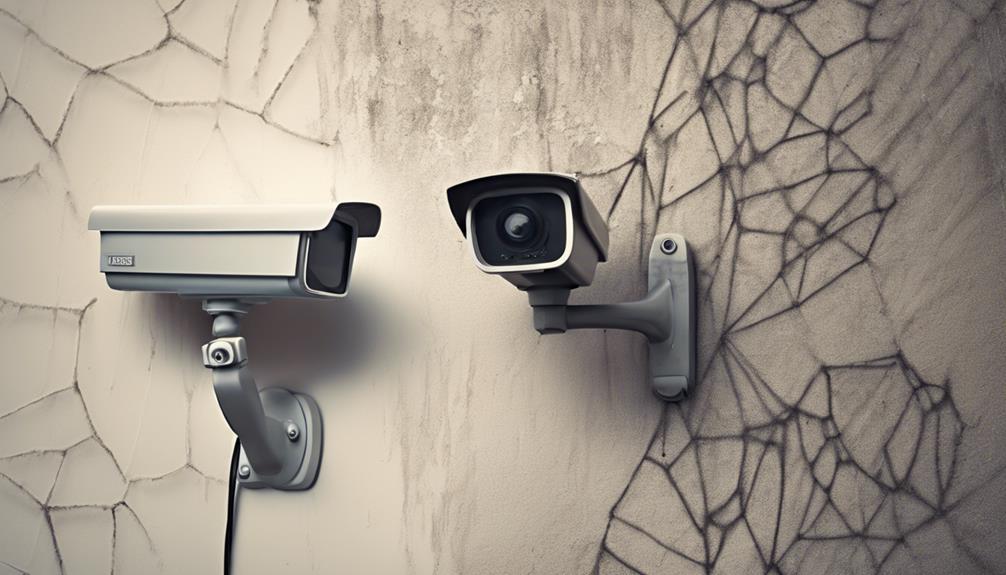
Brainstorm Security Shop

For Orders Over $199

On Any Of Our Products

Details On Refund Page
As a new homeowner, you’re likely considering how best to protect your investment and provide safety for your family. Choosing the right home security system can seem daunting, but it’s crucial you assess your specific needs based on your property’s layout and household dynamics. Whether you’re leaning towards a high-tech smart system or a more traditional monitored setup, there are several options that can suit your situation and budget. But how do you determine which system is truly the best fit for your home, and what should you know about the installation and ongoing maintenance? Let’s explore these questions together.
Before you invest in a security system, you must evaluate the specific safety needs of your home. Start by considering your neighborhood’s crime rate. If thefts or break-ins are frequent, you’ll likely need a more robust system. Don’t just rely on general statistics; ask local law enforcement or neighbors for their insights.
Next, examine the physical layout of your property. A larger home with multiple entry points may require more extensive monitoring than a smaller, single-entry home. Pay special attention to areas that are hidden from view, as these can be more vulnerable to unauthorized access.
You should also think about who lives in your home. If you have children or elderly family members, you might prioritize features that offer quick emergency responses. Additionally, consider your lifestyle. If you travel often, you’ll want a system that you can control remotely and that alerts you to any incidents at home.
After assessing your home’s security needs, let’s explore the different types of home security systems available. You’ve got a few main options to consider, each catering to various preferences and requirements.
Firstly, there are monitored security systems, where professionals watch over your home 24/7. If an alarm is triggered, the monitoring service contacts you and, if necessary, emergency services. It’s great for peace of mind, especially if you’re often away from home.
Unmonitored systems, on the other hand, rely on you or your neighbors to call for help when the alarm goes off. These systems typically include sirens and flashing lights to alert those nearby and deter intruders.
Wireless security systems are easy to install and can be monitored or unmonitored. You can often set these up yourself and move components around as needed without fuss.
Wired systems are more traditional and involve physical connections between the alarm sensors and the control panel. They’re generally considered more reliable than wireless systems but require professional installation and are less flexible in terms of placement.
Choosing the right type depends on your specific needs, budget, and how much reliance you want on professional monitoring versus personal oversight.

Smart security features offer you enhanced control over your home’s safety, providing real-time alerts and remote access to security systems. You’ll love how you can monitor your property from anywhere in the world. Whether you’re at work or on vacation, you can check in on your home with just a few taps on your smartphone. This level of connectivity not only boosts your peace of mind but also adds a layer of convenience that traditional systems can’t match.
You’ll also appreciate how smart security features can integrate seamlessly with other devices in your home. Imagine your lights turning on automatically when a camera detects motion, or receiving an alert when a door is unlocked. These interconnected systems work together to enhance your home’s security and your ability to respond to potential threats swiftly.
Moreover, smart security systems often come with customizable options that let you tailor your settings according to your specific needs. You can set up notifications for specific events, define who gets access to your live feeds, and adjust sensor sensitivity. This customization ensures that you’re not just protected, but also that your system adapts to your lifestyle, making it a truly valuable addition to your new home.
Installing your home security system involves a few key steps that ensure everything functions seamlessly and efficiently. First, you’ll need to decide on the placement of cameras and sensors. High-traffic areas and entry points like front and back doors, windows, and garages are ideal. Make sure you’re not overlooking any vulnerable spots.
Next, you’ll mount the hardware. Most systems come with a mounting kit and instructions. You’ll often just need a drill and some basic tools. For wireless systems, ensure your devices are within range of your home Wi-Fi signal to maintain connectivity.
After mounting, it’s time to connect your devices to the main control panel. This can usually be done through a smartphone app or a computer. Follow the setup instructions carefully to synchronize each component correctly. Test each sensor and camera to confirm they’re functioning and covering the intended areas.
Lastly, customize your settings. Adjust motion detector sensitivity, set up alert preferences, and create unique user codes. Familiarize yourself with the system’s operations. Don’t skip this step as it’s crucial for troubleshooting and ensuring you’re comfortable using the system day-to-day.

Now that your system is set up, let’s explore the monitoring services options available to keep your home secure. You’ve got a variety of choices, each suited to different needs and preferences.
Firstly, you can opt for professional monitoring services. This means that a dedicated team monitors your home 24/7. They’ll alert you and the authorities the moment they detect an intrusion or any emergency. It’s a great option if you’re often away from home or prefer having someone else manage security alerts.
Alternatively, you might consider self-monitoring. This is where you, possibly with the aid of a mobile app, keep tabs on your home through cameras and sensors. You’ll receive notifications directly on your phone if something’s amiss. This choice can be more hands-on and cost-effective, as you’re not paying for a monitoring service.
Hybrid options are also available, blending professional and self-monitoring. For example, you could self-monitor your home but have professional services on standby during vacations or extended absences.
Each option offers different levels of involvement and peace of mind. Think about your lifestyle, security needs, and how much direct control you want over monitoring your home. Choose the service that best fits your situation to maintain optimal security.
Evaluating the costs and setting a budget for your home security system ensures you maintain affordability while achieving optimal protection. Start by considering the basic components you’ll need, such as cameras, sensors, and a control panel. Prices can vary significantly based on brand, technology, and features. Don’t forget to factor in installation fees if you’re not going the DIY route.
Next, think about the ongoing costs. These include monitoring services, which can range from a minimal monthly fee to more comprehensive plans that bump up the cost. Also, consider the potential increase in your electricity bill and the need for occasional maintenance or upgrades.
It’s wise to compare different systems and services to see what fits your budget while still providing the security you need. Look for promotions or bundled packages that might offer savings.
You can further enhance your system’s effectiveness by considering various security add-ons tailored to your needs. Extra cameras, for instance, provide a wider viewing range and more surveillance points, ensuring there are fewer blind spots around your home.
Think about integrating motion sensors in your yard or near entryways to detect any unusual activity before it reaches your doors.
Consider smart door locks, which allow you to control access remotely and monitor who enters your home. This is particularly useful if you’re away often or need to let in guests or service providers without providing a physical key.
Video doorbells are another great option, combining the benefits of a standard doorbell with the added security of being able to visually verify visitors before opening the door.
For enhanced window security, glass break sensors can alert you to the sound of breaking glass, an invaluable tool if someone attempts to enter forcibly.
Additionally, environmental sensors that detect smoke, carbon monoxide, or even water leaks can be integrated to provide comprehensive safety measures that go beyond deterring intruders.
Each of these add-ons not only boosts your security but also adds a layer of convenience and peace of mind to your home safety strategy.
While adding security features boosts your system’s effectiveness, maintaining and troubleshooting them ensures they continue to function properly. Regular checks are crucial, and here’s how you can keep your system in top shape.
Firstly, you’ll need to regularly check the batteries in your wireless security devices. Most systems will alert you when battery levels are low, but it’s a good idea to preemptively replace them every year. Also, clean your cameras and sensors to ensure they’re free of dust and spiderwebs. This prevents false alarms and guarantees clear camera footage.
If you’re experiencing false alarms, it might be due to improperly positioned sensors. Make sure they aren’t facing windows or heating sources, as changes in light and temperature can trigger sensors. Adjust their sensitivity settings if necessary.
For software issues, always ensure your system’s firmware is up to date. Manufacturers often release updates to patch security vulnerabilities and improve functionality. If you’re stuck, don’t hesitate to consult the user manual or contact customer support. They can often remotely diagnose and fix issues.
Lastly, test your entire system monthly. Activate each sensor and monitor the response times to ensure all components communicate effectively. This proactive approach will keep your security system reliable and effective.

As a new homeowner, you’ve taken a smart step toward safeguarding your haven. Remember, choosing the right security system isn’t just about budgeting; it’s about understanding your unique needs and enhancing those with smart features and reliable monitoring.
Regular maintenance and staying informed on troubleshooting will keep your system optimal. Embrace these tips, invest wisely, and you’ll not only protect your property but also gain invaluable peace of mind.
Welcome to secure and worry-free homeownership!

Brainstorm Security Shop
1867 Caravan Trail
Ste 105
Jacksonville, FL 32216
Call us toll free: (800) 859-5566